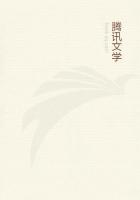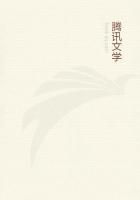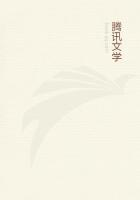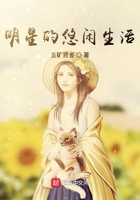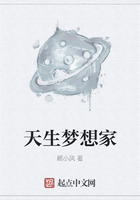We watch the blonde, learned lady, dreaming of Perseus, and Lucius, Greek lovers of old time, while the sun gilds her yellow hair, and the young monk, passing below, sees and loves, and "falls into the deep waters of desire." The lover is no less learned than the lady, and there is a great deal of amorous archaeology in his account of his voyage to Cythera. As to the designs in wood, quaint in their vigorous effort to be classical, they have been attributed to Mantegna, to Bellini, and other artists. Jean Cousin is said to have executed the imitations, in the Paris editions of 1546, 1556, and 1561.
The "Hypnerotomachia" seems to deserve notice, because it is the very type of the books that are dear to collectors, as distinct from the books that, in any shape, are for ever valuable to the world. Acheap Tauchnitz copy of the Iliad and Odyssey, or a Globe Shakespeare, are, from the point of view of literature, worth a wilderness of "Hypnerotomachiae." But a clean copy of the "Hypnerotomachia," especially on VELLUM, is one of the jewels of bibliography. It has all the right qualities; it is very rare, it is very beautiful as a work of art, it is curious and even bizarre, it is the record of a strange time, and a strange passion; it is a relic, lastly, of its printer, the great and good Aldus Manutius.
Next to the old woodcuts and engravings, executed in times when artists were versatile and did not disdain even to draw a book-plate (as Durer did for Pirckheimer), the designs of the French "little masters," are at present in most demand. The book illustrations of the seventeenth century are curious enough, and invaluable as authorities on manners and costume. But the attitudes of the figures are too often stiff and ungainly; while the composition is frequently left to chance. England could show nothing much better than Ogilby's translations of Homer, illustrated with big florid engravings in sham antique style. The years between 1730 and 1820, saw the French "little masters" in their perfection. The dress of the middle of the eighteenth century, of the age of Watteau, was precisely suited to the gay and graceful pencils of Gravelot, Moreau, Eisen, Boucher, Cochin, Marillier, and Choffard. To understand their merits, and the limits of their art, it is enough to glance through a series of the designs for Voltaire, Corneille, or Moliere. The drawings of society are almost invariably dainty and pleasing, the serious scenes of tragedy leave the spectator quite unmoved. Thus it is but natural that these artists should have shone most in the illustration of airy trifles like Dorat's "Baisers," or tales like Manon Lescaut, or in designing tailpieces for translations of the Greek idyllic poets, such as Moschus and Bion. In some of his illustrations of books, especially, perhaps, in the designs for "La Physiologie de Gout" (Jouaust, Paris, 1879), M. Lalauze has shown himself the worthy rival of Eisen and Cochin.
Perhaps it is unnecessary to add that the beauty and value of all such engravings depends almost entirely on their "state." The earlier proofs are much more brilliant than those drawn later, and etchings on fine papers are justly preferred. For example, M.
Lalauze's engravings on "Whatman paper," have a beauty which could scarcely be guessed by people who have only seen specimens on "papier verge." Every collector of the old French vignettes, should possess himself of the "Guide de l'*******," by M. Henry Cohen (Rouquette, Paris, 1880). Among English illustrated books, various tastes prefer the imaginative works of William Blake, the etchings of Cruikshank, and the woodcuts of Bewick. The whole of the last chapter of this sketch is devoted, by Mr. Austin Dobson, to the topic of English illustrated books. Here it may be said, in passing, that an early copy of William Blake's "Songs of Innocence,"written, illustrated, printed, coloured, and boarded by the author's own hand, is one of the most charming objects that a bibliophile can hope to possess. The verses of Blake, in a framework of birds, and flowers, and plumes, all softly and magically tinted, seem like some book out of King Oberon's library in fairyland, rather than the productions of a mortal press. The pictures in Blake's "prophetic books," and even his illustrations to "Job," show an imagination more heavily weighted by the technical difficulties of drawing.
The next class of rare books is composed of works from the famous presses of the Aldi and the Elzevirs. Other presses have, perhaps, done work as good, but Estienne, the Giunta, and Plantin, are comparatively neglected, while the taste for the performances of Baskerville and Foulis is not very eager. A safe judgment about Aldines and Elzevirs is the gift of years and of long experience.
In this place it is only possible to say a few words on a wide subject. The founder of the Aldine press, Aldus Pius Manutius, was born about 1450, and died at Venice in 1514. He was a man of careful and profound learning, and was deeply interested in Greek studies, then encouraged by the arrival in Italy of many educated Greeks and Cretans. Only four Greek authors had as yet been printed in Italy, when (1495) Aldus established his press at Venice.

